#fatma sultan daughter of murad v
Photo








(my favourite) Ottoman Princesses named: Fatma
Fatma is the Turkish equivalent of the Arabic name Fatima or Fatimah. As it was the name of the Prophet Muhammad's favourite daughter - among other members of his family - it was widely popular among Ottoman princesses, and some consorts as well.
#history#historyedit#ottoman history#fatma sultan daughter of bayezid ii#fatma sultan daughter of selim i#fatma sultan daughter of selim ii#fatma sultan daughter of murad iii#fatma sultan daughter of ahmed i#fatma sultan daughter of ahmed iii#fatma sultan daughter of abdulmecid i#fatma sultan daughter of murad v#princessesnames#ottomanladiesedit
167 notes
·
View notes
Text
Seniha Sultan (5 December 1851- 15 September 1931)
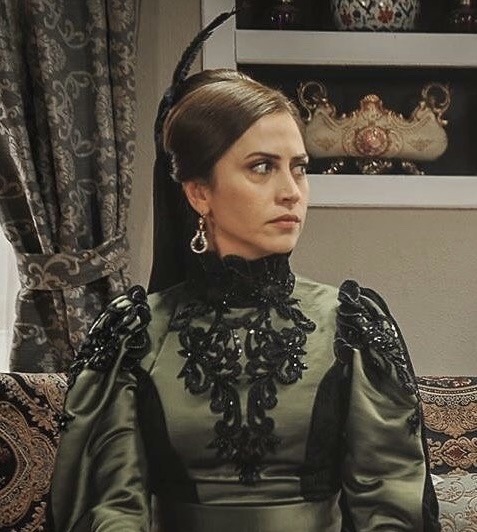
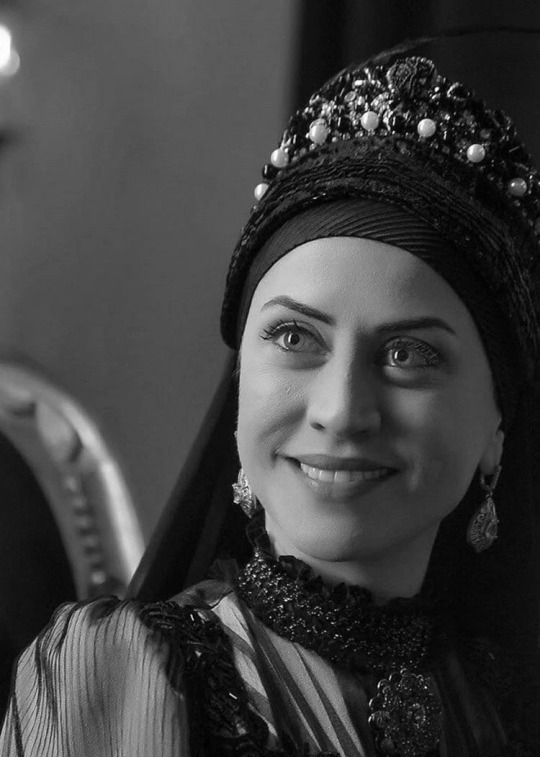
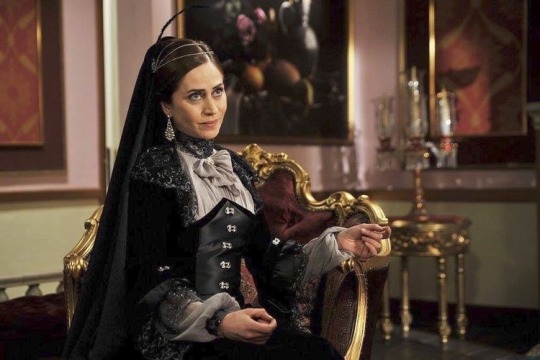
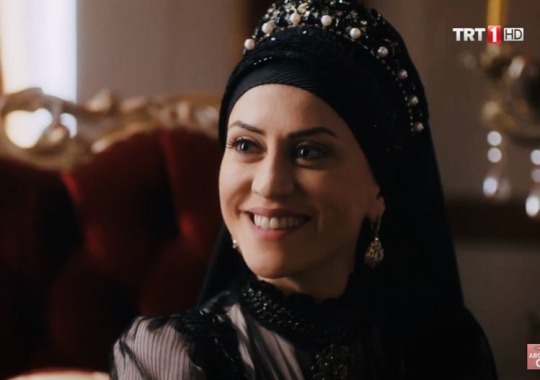

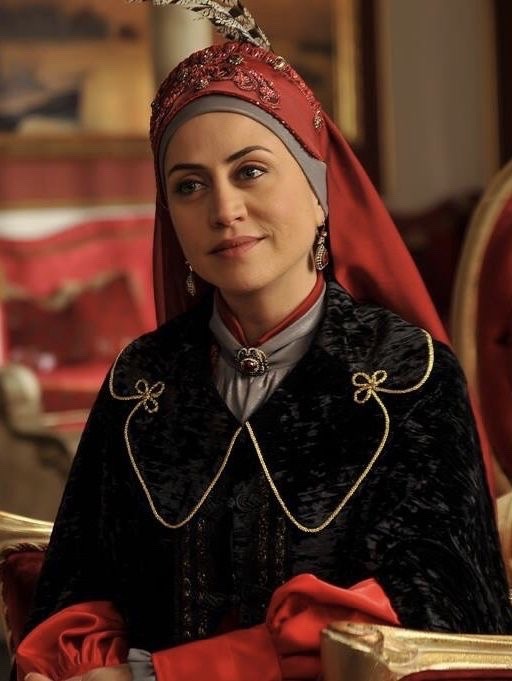


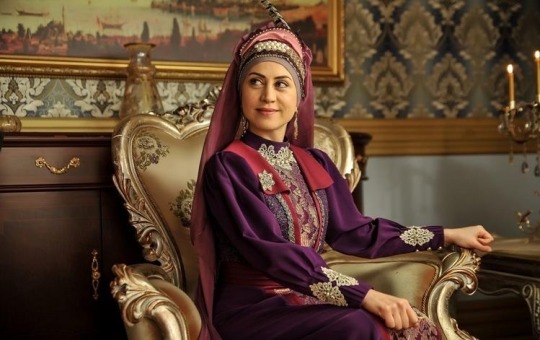
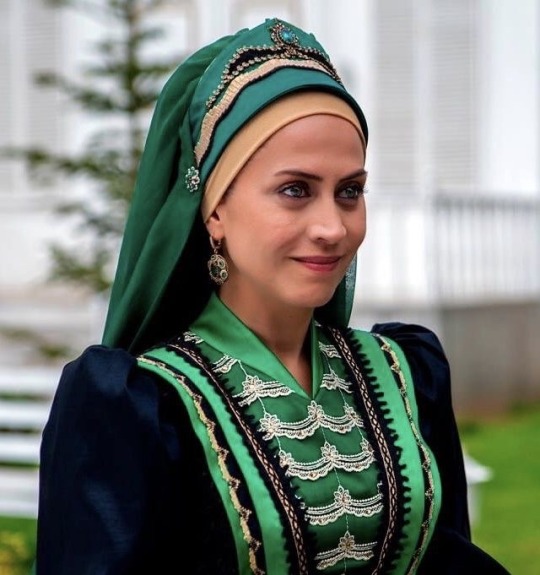
Daughter of Abdulmejid I and Nalandil Hanim
Wife of Mahmud Celaeddin Pasha
Mother of Sultanzade Sabahddin Bey and Sultanzade Ahmed Lutfullah Bey.
Sister of Sultans Murad (half), Abdul Hamid II (half), Mehmed V (half), and Mehmed VI.
Aunt of Sehzade Mehmed Selaheddin, Hatice Sultan (Murad), Fehime Sultan, Fatma Sultan (Murad), Aliye Sultan, Sehzade Mehmed Selim, Ulviye Sultan, Zekiye Sultan,Sehzade Ahmed Nuri, Naime Sultan, Sehzade Mehmed Abdulkadir, Naile Sultan, Sehzade Mehmed Burhaneddin, Sadiye Sultan, Ayse Sultan, Refia Sultan, Sehzade Abdurrahim Hayri, Hatice Sultan (Abdul Hamid II), Sehzade Ahmed Nureddin, Sehzade Mehmed Abid, Samiye Sultan, Sehzade Mehem Ziyaeddin, Sehzade Mahmid Necmeddi, Sehzade Omer Hilmi, Fenire Sultan, Ulviye Sultan (Mehmed VI), Sabiha Sultan, and Sehzade Mehmed Ertugrul.
Mother-in-law of Tabinak Hanım
7 notes
·
View notes
Text
Portraid of Ahmed I's sons / I. Ahmed szultán fiainak portréi
Ez a portrésorozat nem tartalmazza I. Ahmed három fiát, akikből később szultán lett (II. Oszmán, IV. Murad és I. Ibrahim). A szultánoknak különálló portré készült vagy fog készülni.
This series of portraits do not include the three sons of Ahmed I, who later became sultans (Osman II, Murad IV, and Ibrahim I). Separate portraits have been or will be published for them.
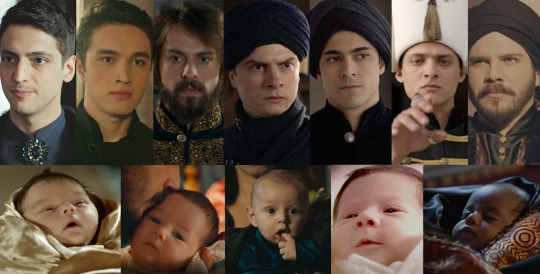
Şehzade Mehmed
Ahmed ascended the throne in December 1603, his first son Osman II was born in November 1604, followed a few months later by Prince Mehmed. Mehmed's mother was Kösem Sultan and he was born in March 1604 in Istanbul. The identity of his mother has long been in question, but nowadays we have evidence that indirectly clarifies that he was born as the son of Kösem Sultan. One such proof is that Kösem Sultan became a Haseki in late 1605 or early 1606, and this would hardly have been possible without a son. Another piece of evidence is an ambassadorial report from 1611/12 that says "The King has two sons, one is seven years old, the other six. His Majesty has three daughters as well, and to him sons are born very often, both for the abundancy of women and both for his youth and prosperity". Simone Contarini, who wrote this understood Osman and Mehmed as the two boys, but the three girls must have been mistaken, as Ahmed had four daughters alive at that time (Ayşe, Gevherhan, Fatma, and Hanzade). Perhaps Contarini only knew about the existence of Ayşe, Fatma, and Hanzade, as they were the children of Kösem Sultan, the famous favorite of Ahmed.
The counter-arguments that Mehmed was not the son of Kösem Sultan have now been overturned. In 1614, Della Valle recorded the second son of Sultan Ahmed as Sehzade Mahmud, which was mistakenly identified with Prince Murad by some. Murad was born in 1612 though. Mahmud was certainly a misunderstood version of Mehmed, not Murad. Another counter-argument was Valier's account of 1615. In that, he wrote that the Sultan not allowing the two older princes near Kösem Sultan, for the Sultan is well aware of Kösem Sultan's ambitions for her own children. Many identified the two princes as princes of Osman and Mehmed, so they though none of them were Kösem's sons. However, it was more likely that Valier meant Mustafa, Ahmed’s brother, and Osman, Ahmed's firstborn son. This is supported in particular by an earlier account of Valier, where he clearly describes that the sultan has four sons, two from the dead sultana and two from the living one. Since Mahfiruze - the mother of Osman - died around 1612, it is clear that she was the dead sultana. Mahfiruze's other son may have been Prince Bayezid, who was born in 1612 soon after Murad, the second son of the living sultana, Kösem.
It can be seen that the counter-arguments are much weaker, so we can say with relative certainty that Prince Mehmed was the firstborn son of Kösem Sultan. Not much is known about Mehmed's childhood. It is known that although they were taught and raised separately with Osman, their teacher was the same Ömer Efendi. Mehmed had joint programs with Osman after 1612 though. Kösem Sultan visited the Old Palace regularly to meet with Safiye Sultan, Ahmed's grandmother, and she regularly took Prince Mehmed with her, and occasionally also Osman. After Ahmed forbade her to spend time with Osman, she probably traveled to the Old Palace with Mehmed and possibly with her daughters or her second oldest son, Murad.
Mehmed's first real public appearance was shortly before his father's death, in 1617. It was then that the mosque complex of Sultan Ahmed was completed. Ahmed took his two oldest sons, Osman and Mehmed, to the opening ceremony. Ahmed died at the end of the year and a chaotic period ensued. The abolition of fratricide has long been a central theme in the Ottoman Empire and although Ahmed himself was against it and he did not execute his brother, Mustafa, he never made a legal decree about the topic. The only chance to save the lives of Mehmed and his younger brothers was to change the succession-system. Kösem Sultan for years tried to convince Ahmed and although she undoubtedly had something to do with Prince Mustafa surviving, after Ahmed’s death she could do nothing. However Haci Mustafa Aga, the chief black eunuch who was in close association with Kösem Sultan, was able to do something. He influenced the divan and ulema to enthrone the oldest living prince and spare the lives of the others. Thus the brother of Ahmed, Mustafa I, was put to the throne, so Mehmed and his brothers were locked up in the harem, but stayed alive.
Little is known about this short period since Mustafa was soon dethroned and Osman was enthroned. It was easy to influence Osman and this often pushed him to make wrong decisions. Osman was not popular, there were no supporters of his, there was no strong mother behind him who would have helped, so he was understandably terrified of Prince Mehmed. Mehmed was only four months younger, but his mother was an extremely popular and influential woman. Kösem Sultan never did anything against Osman, on the contrary, she tried to build a nice relationship and Osman also visited her in the Old Palace regularly. Over time, however, Osman's paranoia grew bigger. In the spring of 1621, he wanted to leave the capital to go on a campaign but was afraid to leave Mehmed in the capital. Osman feared that Kösem Sultan and Mehmed would do something and would enthrone Mehmed while he was at war. The logical step would have been for Osman to take Mehmed with him to the campaign, but Osman wanted a more definitive solution. For this reason, during the preparations for the campaign, he executed his brother in January 1621.
Mehmed certainly saw exactly how dangerous the situation was, and we can assume that during Osman's reign he feared that Osman would eventually revive the law of fratricide. Mehmed’s death shook Istanbul, poets of the age often write about this bloody event with immense disgust. Naima, for example, openly condemns and calls Osman a tyrant for making an innocent prince, Mehmed Khan, a martyr for his own power. According to legend, while Mehmed fought for his life with his executioners, he cursed Osman: "Osman! I beseech God that your life and your reign be full of dread, and as you have deprived me of my life, may the same fate be yours."
Whether the curse is true or not, the end soon reached Osman. A few days after Mehmed’s death, a huge snowstorm struck Istanbul, killing thousands of people. Commoners interpreted this as Revenge of Allah for Osman's disgusting act, so his popularity sank to unprecedented depths. And soon after his failed campaign, Osman was dethroned and brutally executed and mutilated.

Şehzade Cihangir
All we know about Prince Cihangir was that he was born in 1609 and died soon after. The identity of his mother is unknown, but it is almost certain that it was not Kösem Sultan. Kösem Sultan gave birth to another child, Hanzade Sultan, in 1609. It is unlikely that she would have given birth to two children in one year.
Şehzade Selim
Prince Selim was born in the summer of 1611 and died a month after his birth. The identity of his mother is unknown. He was buried in his father's mausoleum.
Şehzade Hasan
Prince Hasan was born in November 1612 between the later sultan Murad IV and Prince Bayezid, as the child of an anonymous concubine. He died shortly after his birth and was buried in his father's mausoleum.
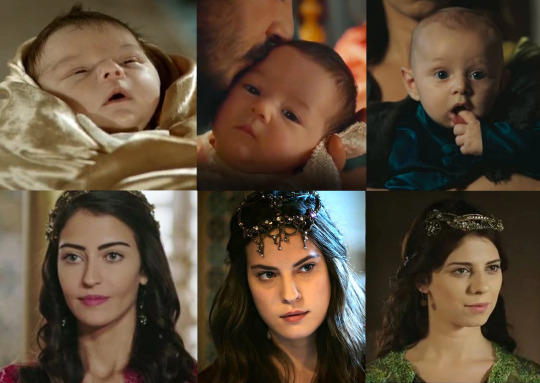
Şehzade Bayezid
Prince Bayezid was born in December 1612, a few months after the birth of Prince Murad (later Murad IV) in July. Accounts suggest that Bayezid was Osman's full-brother, so his mother was Mahfiruze, too. Mahfiruze disappears from the harem records around this time, perhaps for complications after childbirth, perhaps for other reasons, but she died during this period.
We don't know much about his childhood. After the deaths of Prince Mehmed and Sultan Osman II, Murad, who was barely older than Bayezid, ascended the throne in 1623. This essentially made Bayezid the heir to the throne, with many dangers, especially since he was only a half-brother to Sultan Murad. Because of Murad's youth, his mother, Kösem Sultan, ruled the empire as a regent. The situation was very bad, in recent years the empire has gradually sunk into anarchy and the situation has become increasingly bleak. Kösem Sultan and the statesmen fought hard to pull the empire out of the chaos, and although they achieved success, they failed to solve all the problems.
Then, in 1632, tension peaked in a Janissary rebellion. The Janissaries executed several of Murad's close confidants and demanded that the Sultan show them the princes. Murad was forced to agree to this and showed his brothers the Janissaries, who at this time began to rejoice for the princes. This humiliation was never forgotten and forgiven by Murad later. It was then that he experienced for the first time in his life that Bayezid (and also his other brothers) posed a huge threat to him. It is not known how Bayezid felt about the situation, however, given that he was not the son of Kösem, he could not expect too much support, which made it probably a difficult time for him.
In fact, we know almost nothing about Bayezid's life and personality, he lived his life locked up in the palace. Contrary to the picture conjectured by the series, Bayezid was not particularly close to Murad and there was no bond between them. This, too, certainly played a role in Bayezid's destiny. Murad considered Selim I to be his role model, trying to follow him in everything, so he also wanted to bring back the old succession-system so that his son would follow him on the throne, and not one of his younger brothers. In addition, Murad was getting worse mentally and physically over the years, so he began to become paranoid and saw conspiracy against him in everything. These things together caused the end of Murad's brothers. After the victory of Revan in 1635, while the people celebrated he ordered the execution of two of his half-brothers, Prince Bayezid and Suleiman. Bayezid was buried in the mausoleum of his father, Ahmed I.

Şehzade Orhan
The birth, death of Prince Orhan, and his mother's identity are all unknowns. Most give his birth date between 1612 and 1617, but there is no primer evidence to suggest this. Since we know so little about him, he probably died shortly after his birth.
Şehzade Hüseyin
Prince Hüseyin was born in November 1613, not knowing who his mother was, but it is certain that it was not Kösem Sultan. The time of his death is 1617, however, we do not have a more precise date. It is interesting, however, that he was not buried in the mausoleum of his father, Ahmed I, but in his grandfather's, Mehmed III's mausoleum. The reason for this was perhaps that Ahmed's mausoleum was not completed when he died (very early 1617), which is why he was buried in Mehmed III's mausoleum. Of course, they could have been reburied him to Ahmed's mausoleum as they did with Ahmed’s previously deceased sons. We don't know why they did not rebury him. Maybe since Ahmed himself had soon passed away, there was no time for that. Maybe the prince's tomb was too fresh when the other princes were reburied so he was left out?
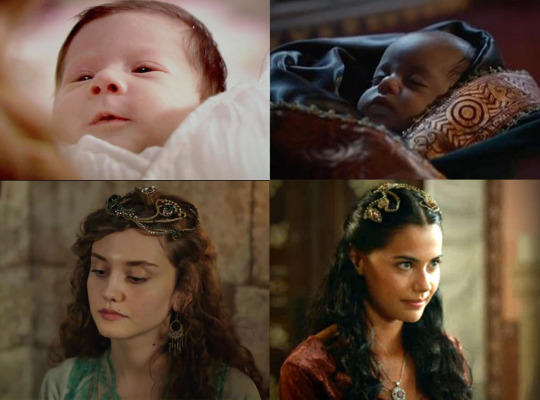
Şehzade Kasim
He was born in the beginning of 1614 as the son of Kösem Sultan. Prince Kasim spent a significant part of his childhood separated from his mother, locked in the kafes during the reigns of Mustafa II, Osman II, and then again Mustafa I. From 1617 to 1623 he had little or no access to his mother. It is not known how Kasim spent his childhood after 1623. As the son of Kösem and Murad's full-brother, perhaps during Murad's early reign, he was able to enjoy a little more freedom in the palace than his half-brothers. At least we can assume this when Kösem's reign lasted, until 1632.
In 1632 his life changed radically, for Kösem lost her regent position and Murad began to rule by himself with extreme strictness. This year there was a Janissary uprising in which the Janissaries, fearing that Sultan Murad had secretly executed his brothers, demanded that the Sultan show them the princes. Murad complied with the demands of the Janissaries, but never forgave the humiliation.
Little is known about Kasim's life during Murad's later reign. There are several legends based on contemporary and somewhat later accounts, however, their reliability is rather doubtful. These legends suggest that Kasim was very close to Murad. Knowing their mother, it seems logical that she tried to push the two boys to love each other, as this was how Kösem could protect her other sons from Murad. Murad and Kasim spent much time together, which Giovanni Cappello also confirms in his account from 1634. According to him, Murad regularly took Kasim with him, treated him very kindly, and even allowed his brother to grow a beard, which was not a custom among the princes living in the palace.
Knowing this, it is particularly surprising that Murad eventually turned against Kasim. Murad considered Selim I to be his role model, trying to follow him in everything, so he also wanted to bring back the old succession-system so that his son would follow him on the throne, and not one of his younger brothers. In addition, Murad was getting worse mentally and physically over the years, so he began to become paranoid and saw conspiracy against him in everything. As a result, Murad first made a fatal decision in 1635 and executed his half-brothers, Bayezid and Suleiman. He spared Kasim and his other brother, Ibrahim back then. But over time Murad's paranoia continued to grow and in 1638, after the victorious campaign in Baghdad, he also executed Kasim in the Revan Pavilion. Interestingly, barely two years later Murad died in the same place. Prince Kasim was buried in his father's mausoleum.

Şehzade Suleiman
Prince Suleiman was born in 1615 as the son of an unknown concubine. Some believe he was the son of Kösem Sultan, but this is completely ruled out for two reasons. On the one hand, Kösem gave birth to Ibrahim (later Ibrahim I) in November 1615, who was surely her son, so it is not mathematically possible that in 1615 she would have given birth to another child; on the other hand, Suleiman was executed by Sultan Murad in 1635, while his full-brother Kasim was executed only in 1638. It is clear that Murad first wanted to get rid of his half-brothers, so the fact that Suleiman died in 1635 along with Bayezid (who surely was Murad's half-brother) is in itself enough proof that he was not the son of Kösem. Prince Suleiman was also buried in the mausoleum of Ahmed I.

Used sources: C. Finkel - Osman's Dream: The Story of the Ottoman Empire; L. Peirce - The imperial harem; G. Börekçi - Factions and favourites at the courts of Sultan Ahmed I (r. 1603-17) and his immediate predecessors; S. Faroqhi - The Ottoman Empire and the World; C. Imber - The Ottoman Empire 1300-1650; F. Suraiya, K. Fleet - The Cambridge History of Turkey 1453-1603; G. Piterberg - An Ottoman Tragedy, History and Historiography at Play; F. Suraiya - The Cambridge History of Turkey, The Later Ottoman Empire, 1603–1839; Howard - A History of the Ottoman Empire; Öztuna - Devletler ve Hanedanlar; Uluçay - Padişahların Kadınları ve Kızları; : F. Davis - The Palace of Topkapi in Istanbul; Y. Öztuna - Genç Osman ve IV. Murad
* * *
Şehzade Mehmed
Ahmed 1603 decemberében került trónra, első fia II. Oszmán 1604 novemberében jött világra, őt néhány hónappal követte Mehmed herceg. Mehmed édesanyja Köszem szultána volt és 1604 márciusában jött világra Isztambulban. Édesanyjának kiléte sokáig kérdéses volt, azonban napjainkban rendelkezésünkre állnak olyan bizonyítékok, melyek közvetetten egyértelműsítik, hogy Mehmed Köszem fiaként jött világra. Egyik ilyen bizonyíték, hogy Köszem 1605 végén vagy 1606 elején lett Haszeki szultána, ez pedig fiúgyermek születése nélkül aligha lett volna lehetséges. Másik bizonyíték egy 1611/12-ből származó követi beszámoló, mely úgy szól "a szultánnak két fia van, egyikük hét éves, másikuk hat. Emellett a szultánnak három lánya is van. Fiatalsága és termékenysége, valamint az, hogy nőkben nem szenved hiányt arra enged következtetni, hogy hamarosan több fiú fogja követni az első kettőt. Simone Contarini, aki az írás szerzője a két fiú alatt Oszmánt és Mehmedet értette, a három lány viszont minden bizonnyal tévedés lehetett, ugyanis Ahmednek ekkoriban négy lánya volt életben (Ayşe, Gevherhan, Fatma és Hanzade). Talán Contarini csak Ayşe, Fatma és Hanzade létéről tudott, ők voltak ugyanis Köszem - a kedvenc ágyas - gyermekei.
Az ellenérvek arra, hogy Mehmed nem Köszem fia volt mára megdőltek. Della Valle 1614-ben Ahmed szultán második fiát Sehzade Mahmudként jegyezte fel, melyet tévesen Murad herceggel azonosítottak néhányan, aki 1612-ben született. A Mahmud minden bizonnyal a Mehmed félreértett változata volt, nem a Muradé. Másik ellenérv volt Valier 1615-ös beszámolója, aki arról beszélt, hogy a szultán nem engedi a két idősebb herceget Köszem közelébe, ugyanis a szultán jól ismeri Köszem ambíciójit és tudja, hogy Köszem csak ártana a két hercegnek saját gyermekei érdekében. Sokan a két herceget Oszmán és Mehmed hercegekkel azonosították, azonban valószínűbb, hogy Valier Musztafára, Ahmed öccsére és Oszmánra gondolt. Különösen alátámasztja ezt Valier egyik korábbi beszámolója, ahol egyértelmen leírja, hogy a szultánnak négy fia van, kettő a halott és kettő az élő szultánáról. Mivel Mahfiruze - Oszmán anyja - 1612 körül elhunyt egyértelmű, hogy ő a halott szultána. Mahfiruze másik fia talán Bayezid herceg lehetett, aki nemsokkal Köszem - az élő szultána - második fia, Murad után született 1612-ben.
Látható, hogy az ellenérvek jóval gyengébbek, így relatív biztonsággal állíthatjuk, hogy Mehmed herceg Köszem szultána első szülött gyermeke volt. Mehmed gyermekkoráról nem sokat tudni. Ismert, hogy bár külön oktatták és nevelték Oszmán hercegtől, tanítójuk ugyanaz az Ömer Efendi volt. Oszmánnal 1612 után is voltak közös programjai Mehmednek. Köszem szultána ugyanis rendszeresen látogatott a Régi Palotába, hogy ott találkozzon Safiye szultánával, Ahmed nagyanyjával és ezekre az utakra rendszeresen vitte magával Mehmed herceget, és alkalmanként Oszmánt is. Miután Ahmed eltiltotta Oszmántól valószínűleg Mehmeddel kettesben, esetleg lányaival vagy Muraddal kiegészülve utaztak a Régi Palotába.
Mehmed első nyilvános megjelenése nemsokkal apja halála előtt volt, 1617-ben. Ekkor készült el ugyanis teljes egészében Ahmed szultán mecset kompelxuma, ahová két idősebb fiát, Oszmánt és Mehmedet is magával vitte a megnyitóra. Ahmed még az év végén elhunyt és kaotikus időszak következett. A testvérgyilkosság eltörlése régóta volt központi téma az Oszmán Birodalomban és bár maga Ahmed ellene volt és nem is végeztette ki édesöccsét, Musztafát, sosem hozott döntést arról, hogy halála után ki kövesse a trónon. Az egyetlen esély Mehmed és öccsei életének megmentésére az volt, ha az öröklési sorrendet örökre megváltoztatják. Köszem éveken át próbálta Ahmedet meggyőzni erről és bár kétségkívül köze volt ahhoz, hogy Musztafa herceg életben maradt, Ahmed halála után ő már nem tehetett semmit. Nem úgy a Köszemmel szoros szövetségben álló Haci Musztafa Aga, a fő fekete eunuch, aki befolyásával meggyőzte a divánt és ulemát, hogy Ahmed helyére a legidősebb élő herceget tegyék, a többiek életét pedig kíméljék meg. Így került I. Musztafa néven Ahmed öccse a trónra, Mehmed pedig testvéreivel együtt elzárásra a hárembe.
Keveset tudunk erről a rövid időszakról, hiszen Musztafát mentális betegsége maitt hamarosan trónfosztották és helyére Oszmánt ültették. Oszmán nagyon befolyásolható volt, mely tulajdonsága maitt gyakran hibázott. Oszmán nem volt népszerű, nem voltak támogatói, nem állt mögötte egy erős édesanya, aki segítette volna, így érthető módon rettegett Mehmed hercegtől. Mehmed csak négy hónappal volt fiatalabb, édesanyja viszont rendkívül népszerű és befolyásos asszony volt. Köszem sosem tett semmit Oszmán ellen és Oszmán maga is igyekezett jó viszont ápolni a nővel, rendszeresen látogatta a Régi Palotában. Idővel azonban Oszmán paranoiája eldurvult. 1621 tavaszán el akarta hagynia fővárost, hogy hadjáratra induljon, azonban félt Mehmedet a fővárosban hagyni. Oszmán attól félt, hogy Köszem és Mehmed puccsot elkövetve elfoglalják a trónt, amíg ő háborúzik. A logikus lépés az lett volna, ha emiatt Oszmán magával viszi Mehmedet a hadjáratra, azonban Oszmán ennél véglegesebb megoldást akart. Emiatt a hadjárat előkészületei alatt 1621 januárjában megölette testvérét.
Mehmed minden bizonnyal pontosan látta, milyen veszélyes helyzetben van és feltételezhetjük, hogy Oszmán uralkodása alatt rettegett attól, hogy Oszmán végül feléleszti a testvérgyilkosság törvényét. Mehmed halála megrázta Isztambult, a kor és későbbi korok költői gyakran írnak erről a véres eseménnyel hatalmas undorral. Naima például nyíltan elítéli és zsarnoknak nevezi Oszmánt, amiért saját hatalma érdekében mártrírrá tett egy ártatlan herceget, Mehmed Khant. A legendák szerint amíg Mehmed életéért küzdött a kivégzőivel elátkozta Oszmánt: "Oszmán! Könyörögni fogok Allahnak, hogy egész életed és uralkodásot rettegésben teljen és sorsod legyen ugyanolyan, mint az enyém."
Akár igaz akár nem, Mehmed átka hamarosan elérte Oszmánt. Néhány nappal Mehmed halála után hatalmas hóvihar sújtott le Isztambulra, több ezer ember halálát okozva. Az emberek ezt Allah bosszújaként értelmezték Oszmán undorító cselekedete miatt, így Oszmán népszerűsége sosem látott mélységekbe süllyedt. Sikertelen hadjárata után pedig hamarosan trónfosztották és brutális módon kivégezték és megcsonkították Oszmánt.

Şehzade Cihangir
Cihangir hercegről annyit tudunk, hogy 1609-ben született és nemsokkal később el is hunyt. Édesanyjának kiléte nem ismert, viszont szinte bizton állítható, hogy nem Köszem volt. Köszem ugyanis 1609-ben egy másik gyermeknek, Hanzade szultánának adott életet, így valószínűtlen, hogy egy évben két gyermeket is világra hozott volna.
Şehzade Selim
Szelim herceg 1611 nyarán született és születése után nemsokkal meg is halt. Anyja kiléte nem ismert. Apja mauzóleumában helyezték végső nyugalomra.
Şehzade Hasan
Hasan herceg 1612 novemberében született későbbi IV. Murad és Bayezid herceg között, egy névtelen ágyas gyermekeként. Születését követően nemsokkal elhunyt és apja mauzóleumában helyezték végső nyugalomra.

Şehzade Bayezid
Bayezid herceg 1612 decemberében született néhány hónappal Murad herceg (későbbi IV. Murad) júliusi születése után. A követi beszámolók valószínűsítik, hogy Bayezid Oszmán édesöccse volt, így édesanyja neki is Mahfiruze volt. Mahfiruze innentől eltűnik a hárem jegyzőkönyvekből, talán a szülés után fellépő komplikációk, talán más okok miatt, de ebben az időszakban elhunyt.
Gyermekkoráról nem tudunk sokat. Mehmed herceg és Oszmán szultán halála után kisebb kitérővel a Bayezidnél alig idősebb Murad jutott trónra 1623-ban. Ezzel lényegében Bayezid lett a trónörökös, ami igen sok veszéllyel járt, különösen, hogy csak féltestvére volt Murad szultánnak. Murad fiatalkora miatt édesanyja Köszem szultána uralkodott a birodalmon régensként. A helyzet igen rossz volt, az elmúlt években a birodalom fokozatosan süllyedt anarchiába és vált egyre kilátástalanabbá a helyzet. Köszem és az államférfiak erősen küzdöttek, hogy a birodalmat kihúzzák a csávából, és bár értek el sikereket, nem sikerült megoldaniuk a problémákat.
1632-ben aztán egy janicsár lázadásban csúcsosodott ki a feszültség. A janicsárok kivégezték Murad több közeli bizalmasát és követelték a szultántól, hogy mutassa meg nekik a többi herceget. Murad kénytelen volt beleegyezni ebbe és megmutatta janicsároknak testvéreit, akik ekkor éltetni kezdték a hercegeket. Ezt a megaláztatást később Murad sosem felejtette el. Ekkor tapasztalta meg életében először, hogy Bayezid hatalmas veszélyt jelent rá. Nem tudni, hogy Bayezid, hogyan élte meg a helyzetet, azonban tekintettel arra, hogy nem Köszem fia volt nem számíthatott túl sok támogatásra, emiatt feltehetőleg nehéz időszak volt ez számára.
Tulajdonképpen Bayezid életéről, személyiségéről szinte semmit nem tudunk, életét a palotába elzárva élte. A sorozat által sejtetett képpel ellentétben, Bayezid nem állt különösebben közel Muradhoz és nem volt köztük semmi kötelék. Ennek is minden bizonnyal szerepe volt Bayezid végzetében. Murad példaképének I. Szelimet tartotta, őt próbálta követni mindenben, így a régi öröklési rendet is vissza akarta hozni, hogy utána fia kövesse a trónon, ne pedig öccsei közül valaki. Emellett Murad mentálisan és fizikailag is egyre rosszabb állapotban volt az évek során, így kezdett paranoiddá válni és mindenben konspirációt látott személye ellen. Ezek együttesen okoztákazt, hogy 1635-ben a győztes revani hadjárata után, míg az emberek ünnepeltek ő elrendelte két féltestvére, Bayezid és Szulejmán hercegek kivégzését. Bayezidet apja, I. Ahmed mauzóleumában helyezték végső nyugalomra.

Şehzade Orhan
Orhan herceg születése, halála és anyja kiléte egyaránt ismeretlen. A legtöbben 1612 és 1617 közé teszik születését, de nincs erre utaló bizonyíték. Mivel ennyire semmit nem tudunk róla, valószínűleg röviddel születése után elhunyt.
Şehzade Hüseyin
Hüseyin herceg 1613 novemberében jött világra, nem tudni, hogy ki volt az édesanyja, ám az bizonyos, hogy nem Köszem. Halálának ideje 1617, azonban pontosabb időpont nem áll rendelkezésünkre. Érdekesség viszont, hogy nem Ahmed mauzóleumában, hanem nagyapja III. Mehmed mauzóleumában temették el. Ennek oka talán az volt, hogy Ahmed mauzóleuma még nem készült el, mikor meghalt, emiatt III. Mehmedébe temették. Természetesen újratemethették volna, mint Ahmed korábban elhunyt fiait, azonban mivel Ahmed maga is nemsoká elhunyt erre nem jutott idő. Esetleg túl friss volt a sír, amikor a többi herceget újratemették, így ő kimaradt?

Şehzade Kasim
1614 legelején jött világra Köszem szultána fiaként. Kasim herceg gyermekkorának jelentős részét édesanyjától elszakítva töltötte, elzárva a kafesben I. Musztafa, II. Oszmán majd újra I. Musztafa uralkodása alatt. 1617-től 1623-ig nem vagy csak alig találkozhatott édesanyjával. Nem tudni, hogy Kasim gyermekkorát hogyan töltötte. Mivel Köszem fia volt és Murad édestestvére, talán Murad 1623-ban kezdődő uralkodása alatt valamivel nagyobb szabadságot élvezhetett a palotában, mint féltestvérei. Legalábbis feltételezhetjük ezt amíg tartott Köszem uralma, 1632-ig.
1632-ben élete gyökeresen megváltozott, ugyanis Köszem elveszítette régensi pozícióját és Murad kezdett vasszigorral uralkodni. Ebben az évben zajlott egy janicsár felkelés, mely során a janicsárok félve attól, hogy Murad szultán titokban kivégeztette öccseit, követelték, hogy a szultán mutassa meg a herceget. Murad eleget tett a janicsárok követeléseinek, azonban sosem bocsátotta meg a megaláztatást.
Kasim életéről Murad uralkodása alatt keveset tudunk. Több legenda is létezik korabeli és valamivel későbbi beszámolókra alapozva, azonban ezek megbízhatósága meglehetősen kétséges. Ezek a legendák azt sugallják, hogy Kasim igen közel állt Muradhoz. Ismerve édesanyjukat logikusnak tűnik, hogy igyekezett úgy nevelni, hogy a két fiú szeresse egymást, hiszen így óvhatta leginkább Köszem többi fiát Muradtól. Úgy tartják, hogy Murad és Kasim sok időt töltöttek együtt, amit Giovanni Cappello követi beszámolója is alátámaszt 1634-ből. Szerint Murad rendszeresen vitte magával Kasimot, nagyon kedvesen bánt vele és még azt is megengedte öccsének, hogy szakállt viselhessen, ami nem volt szokás a palotában élő hercegek között.
Ennek fényében különösen meglepő, hogy Murad végül Kasim ellen fordult. Murad példaképének I. Szelimet tartotta, őt próbálta követni mindenben, így a régi öröklési rendet is vissza akarta hozni, hogy utána fia kövesse a trónon, ne pedig öccsei közül valaki. Emellett Murad mentálisan és fizikailag is egyre rosszabb állapotban volt az évek során, így kezdett paranoiddá válni és mindenben konspirációt látott személye ellen. Ennek eredményeként Murad először 1635-ben hozott meg egy végzetes döntés és végeztette ki féltestvéreit, Bayezid és Szulejmán hercegeket. Ekkor Kasimot és másik öccsét, Ibrahimot megkímélte. Idővel azonban Murad paranoiája tovább nőtt és 1638-ban a győztes bagdadi hadjárata után kivégeztette Kasimot is, a Revan Pavilonban. Érdekesség, hogy alig két évvel később Murad ugyanitt halt meg megtörve. Kasim herceget édesapja mauzóleumában temették el.

Şehzade Szulejmán
Szulejmán herceg 1615-ben született egy ismeretlen ágyas fiaként. Egyesek úgy tartják Köszem szultána fia volt, ám ez teljességgel kizárt két okból is. Egyrészt Köszem 1615 novemberében adott életet Ibrahimnak (későbbi I. Ibrahim), aki tudottan az ő fia volt, így matematikailag nem lehetséges, hogy 1615-ben egy másik gyermeknek is életet adott volna; másrészt Szulejmánt 1635-ben végeztette ki Murad szultán, míg édestestvérét Kasimot csupán 1638-ban. Egyértelmű, hogy Murad először féltestvéreitől akart megszabadulni, így a tény, hogy Szulejmán 1635-ben halt meg, önmagában is elég bizonyíték, hogy nem Köszem fia volt. Szulejmán herceget is I. Ahmed mauzóleumában temették el.

Felhasznált források: C. Finkel - Osman's Dream: The Story of the Ottoman Empire; L. Peirce - The imperial harem; G. Börekçi - Factions and favourites at the courts of Sultan Ahmed I (r. 1603-17) and his immediate predecessors; S. Faroqhi - The Ottoman Empire and the World; C. Imber - The Ottoman Empire 1300-1650; F. Suraiya, K. Fleet - The Cambridge History of Turkey 1453-1603; G. Piterberg - An Ottoman Tragedy, History and Historiography at Play; F. Suraiya - The Cambridge History of Turkey, The Later Ottoman Empire, 1603–1839; Howard - A History of the Ottoman Empire; Öztuna - Devletler ve Hanedanlar; Uluçay - Padişahların Kadınları ve Kızları; : F. Davis - The Palace of Topkapi in Istanbul; Y. Öztuna - Genç Osman ve IV. Murad
#Ahmed I#Murad IV#sehazde bayezid#sehazde kasim#ibrahim I#deli ibrahim#Kösem sultan#kösem#mahfiruz hatun#mahfiruze#Sehzade mehmed#Osman II#fratricide#selim i#yavuz selim
44 notes
·
View notes
Photo




Murad V of the Ottoman Empire + daughters who reached adulthood
#history#historyedit#ottoman history#murad v#hatice sultan daughter of murad v#fehime sultan daughter of murad v#fatma sultan daughter of murad v#aliye sultan daughter of murad v#ottomanladiesedit#daughtersof#i re-made this because i didn't like the fancasts i had chosen in the first one
149 notes
·
View notes
Note
I have a lot of interest rest in Ottomans. How fashion changed after 1860s in Ottoman women? Ottoman fashion which is shown in Payitaht Abdulhamid in 1890s, was it real? Please explain with pictures
I am sorry for the long wait, I had internet connection problems.
After 1860s is a very specific time but I'll do my best. We can't forget that talking about fashion in a setting like the Ottoman empire is way more difficult because women weren't supposed to be portrayed or photographed so the material is scarce.
It was after the visit of the Empress Eugénie that the women of the palace and the wives of the high functionaries copied as nearly as they could the appearance of the beautiful Empress. They divided their hair in the middle, and spent hours in making little bunches of curls. High-heeled shoes replaced the coloured babouches [slippers]; they even adopted the hideous crinolines and abandoned forever those charming Oriental garments, the chalvar and the entari which they considered symbols of servitude, but which no other fashion has been able to equal in beauty — Zeynoub Hanoum, A Turkish Woman’s European Impressions
The chalvar, called şalvar in Turkish are the characteristic baggy pants that women (and men too) would wear underneath their several layers of clothing. The entari was worn over the undergarments and the şalvar:

These are all XIX century entari.
In any case, rich women began to abandon these clothes for more European ones especially after the visit of Empress Eugénie in Istanbul. This can be seen clearly in children's fashion:

Nazima Sultan in 1876 and Naime Sultan in 1882
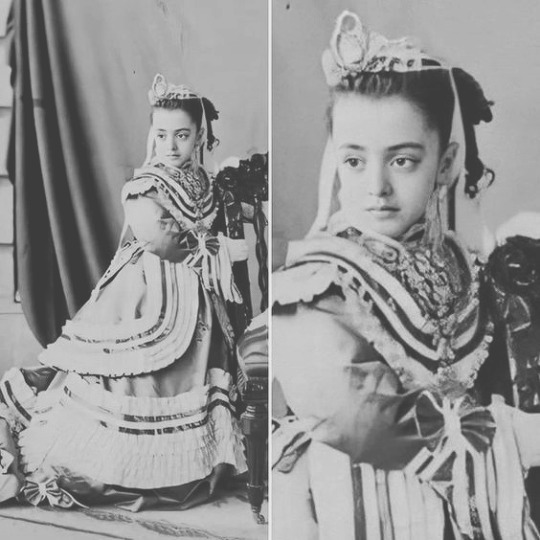
Saliha Sultan in the 1870s
In this period [1867], the young ladies and young girls had completely abandoned the old dresses with three tails or trains and the baggy pants underneath; fashion now demanded shirts with a single train which was caught up and attached to the belt – there were now petticoats instead of şalvars or the baggy pants previously worn. The headdresses had also changed with the times and now usually matched the costumes; there were earrings with jewels, medallions and elaborate hairstyles, garnished with precious stones. — Leyla (Saz) Hanımefendi, The Imperial Harem of the Sultans. Daily Life at the Çıragan Palace During the Nineteenth Century
As for outerwear:
Women changed the thicker cloth they had traditionally used for their feraces (long flowing outer garments) for a much thinner material. They changed their yellow boots of morocco leather for shoes with trimmings of imitation gold thread, which they wore with thin, white socks. They began to use thinner veils and they turned covering themselves into a method for making themselves more alluring, a trend appreciated by Ali Rıza Bey, who commented that ‘the veils of our women, which were a means of ornamenting the face rather than concealing it, became finer. How charming the colourful feraces looked! And these finer veils were unable to obscure the beauty [behind]’. — Ebru Boyar, Kate Fleet - A Social History of Ottoman Istanbul
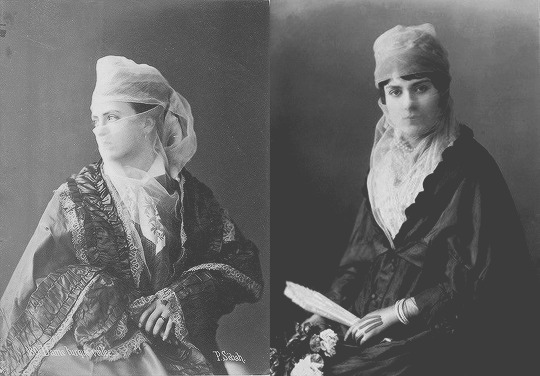
These photographs are great examples of just how fine veils had become. They basically did not hide any feature and this was a problem for conservatives (and sultans as well):
The çarşafs had become merely ordinary dresses, the feraces had turned into sleeveless capes, the veils had become too thin. [Abdülhamid II] issued an order that this should not occur. Further, women were not to wear coats or short, tight-waisted jackets which imitated military styles — Ebru Boyar, Kate Fleet - A Social History of Ottoman Istanbul

In the photograph above you can see a western dress underneath the ferace and several rows of what seem to be pearls.
In the XIX century, women (especially wealthy women of course) began to go out more, especially to pleasure gardens or at the Bosphorus shore. This meant that new accessories began to be used, among them the parasol. As pleasure gardens (ie. parks) were public places, men and women could see each other in these occasions:
A parasol in the rowing boat! It explains what the person wants to say. For example, if it is bent a little to one side, it means ‘I am annoyed with you’, if it is bent over further, ‘I am really angry’, if it completely covers the face, it means ‘you will not see my face again’, ‘I don’t want to see you, have you still not understood?’, if it swings hard from right to left, it signifies ‘don’t stay, pass by’, ‘return, go’, if it falls slightly to the front, it is in the place of a greeting, ‘welcome, sir’, if it falls a lot, ‘my heart has beaten again’, if it goes to the back, it means ‘oh!’, if it leans all the way over backwards, ‘what a state I am in, see me and have pity!’, if it is held to the side, ‘oh, how fine, what happiness this is!’, if it is opened and closed, it means ‘not tonight, tomorrow’, if it is closed and stays so, ‘we will make an appointment for the following day — Ebru Boyar, Kate Fleet - A Social History of Ottoman Istanbul
Men too had secret gestures:
making signs with the eyes and eyebrows, winking one eye, making as if wiping your face with a handkerchief, smelling the handkerchief with which you have just wiped your face, sighing deeply, and placing your hand over your heart. Placing your hand on your temple and half-closing then closing your eyes means ‘I am dying for you’, unbuttoning of one or two buttons of the waistcoat means ‘my heart is palpitating, I cannot bear this beating’. If you have a cigarette in your mouth, even if it is newly lit, and you take it from the corner of your mouth and hurl it away, this is because women do not like addiction to tobacco any more than its smell. To call over a beggar and give him a few coins demonstrates your compassion and generosity. To be busy looking at the posters outside Manakyan’s theatre is a sign of liking romantic themes such as La Dame aux camelias or Countess Sara. — Sermet Muhtar Alus, 30 Sene Evvel İstanbul. 1900’lü Yılların Başlarında Şehir Hayatı
... clothing made in European fashion, top hats, fancy canes, pet dogs, piano lessons, French language lessons, operas, dances, and balls, to the eventual employment of Western literary forms such as the novel, short story, and newspaper and the print culture it introduced, which had profound effects in creating new visions of Ottoman society and the individuals living within it. These literary forms constructed a new image of an Ottoman as a refined man "introverted, very sensitive, knowledgeable in Western music and literature, conversant in a Western language, positivist, attributing value to human beings, and subscribing to a Western style of life" — Fatma Müge Göçek, Rise of the Bourgeoisie, Demise of Empire; Ottoman Westernization and Social Change
Of course the same craze invested the Palace. Sisters Fatma and Mediha are clearly wearing European gowns and accessories:

Fatma Sultan around 1870 and Mediha Sultan in 1888
In the photograph below we can see Refia Sultan dressed exactly like a European woman in 1865. 1865 is very early but she was very interested in everything that came from Europe.

I was not able to identify these people but they're clearly from the Ottoman empire:

the lady is particularly interesting because not only is she wearing a European-style tiara but she seems to be also wearing the Order of the Charity (the white sash) 1st class, which was usually awarded to princesses.
Here we have sisters Hatice, Fehime and Fatma (all daughters of Murad V). The European style of their clothes and accessories is pretty evident.
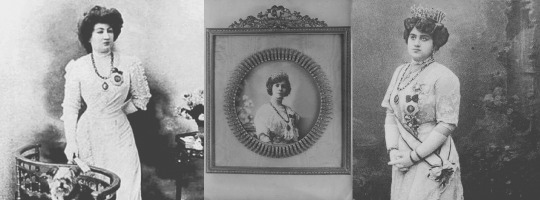

Rukiye Sabiha Sultan on her wedding day in 1921
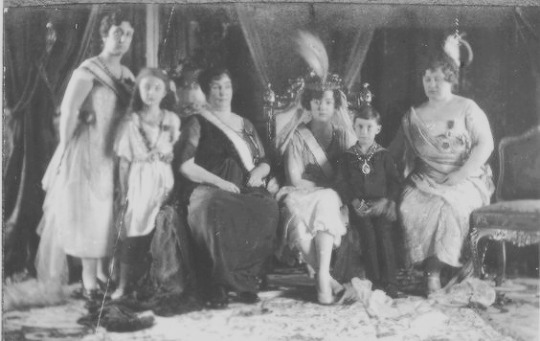
other photo of Rukiye Sabiha Sultan’s wedding
So... yeah, by the fall of the empire clothes were completely European.
#anon#ask post#ask: ottoman history#ottoman fashion#ottoman photos#late ottoman empire#nazima sultan daughter of abdulaziz#naime sultan daughter of abdulhamid ii#saliha sultan daughter of abdulaziz#fatma sultan daughter of abdulmecid i#mediha sultan daughter of abdulmecid i#refia sultan daughter of abdulmecid i#hatice sultan daughter of murad v#fehime sultan daughter of murad v#fatma sultan daughter of murad v#rukiye sabiha sultan daughter of mehmed vi
195 notes
·
View notes
Photo
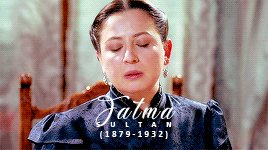







On this day in Ottoman history - 19 June - Fatma sultan was born:
Fatma Sultan was the elder daughter of Murad V and his Senior Ikbal, Resan Hanım. She was born on 19 June 1879, three years into her father's confinement inside Çırağan Palace, and was named after her father's favourite sister. Fatma was described by one of her father’s concubines as "calm, dignified, serious-minded, polite, and gentle." She spent most of her childhood reading books in French and playing the piano.
On 29 July 1907, Fatma Sultan married Karacehennem-zade Dâmâd Refik (Iriş) Beyefendi, a diplomat and son of the governor and senator of Konya. With him, she had five children, three of whom reached adulthood: Sultân-zâde Mehmed ’ÂIî Beyefendi (4.1908 - 22.11.1911), twins Sultân-zâde Mehmed 'Alî Beyefendi (20.1.1909 - 1981) and 'Ayşe Hadîce Hanım-Sultân "iris" (20.1.1909 - 14.10.1968), Sultân-zâde Mehmed Murâd Beyefendi (8.1910-1.1911), and Sultân-zâde Celâleddîn İris Beyefendi (1916 - 1997)
Fatma Sultan inherited her mother's jewel but never wore them. She lived frugally and like an ordinary citizen of Istanbul, even going out herself for the shopping. She was particularly devoted to her husband.
In 1924, the family moved to Sofia, Bulgaria, after the Republic of Turkey was announced. It was there, on 20 November 1932 that Fatma Sultan died and was afterwards buried.
sources: Douglas Scott Brookes - The Concubine, the Princess, and the Teacher: Stories from the Ottoman Harem, M. Çağatay Uluçay - Padişahların Kadınları ve Kızları, Yılmaz Öztuna - Devletler ve Hanedanlar, Necdet Sakaoğlu - Bu Mülkün Kadın Sultanları, Geneaolgy of the Ottoman Imperial Family (2005)
#history#historyedit#ottoman history#on this day in ottoman history#fatma sultan daughter of murad v#ottomanladiesedit
142 notes
·
View notes
Note
Hello, Can you list the granddaughters of Abdülmecid I.
Murad V
Hatice Sultan (4.5.1870-13.3.1938)
Fehime Sultan (2.7.1875-15.9.1929)
Fatma Sultan (19.6.1879-20.11.1932)
Aliye Sultan (24.8.1880-17.09.1903)
Fatma Sultan
Cemile Hanım-Sultân (1855-1855)
Emîne Lutfiye Hanım-Sultân (2.1863-8.1865)
Refia Sultan
unnamed princess (?-after 1886)
Abdülhamid II
Ulviye Sultan (1868-5.10.1875)
Zekiye Sultan (21.1.1872-13.7.1950)
Fatma Naime Sultan (4.9.1875-1945)
Naile Sultan (9.1.1884-25.10.1957)
Seniye Sultan (1884-1884)
Seniha Sultan (1885-1885)
Şadiye Sultan (30.11.1886-20.11.1977)
Ayşe Sultan (31.10.1887-11.8.1960)
Refia Sultan (15.6.1891-1938)
Hatice Sultan (10.7.1897-13.2.1898)
Aliye Sultan (1900-1900)
Cemile Sultan (1900-1900)
Samiye Sultan (16.1.1908-24.1.1909)
Cemile Sultan
Fethiye Hanım-Sultân (1859 - 22.3.1887)
Ayşe Şıdıka Hanım-Sultân (21.9.1875-1937)
Fatma Hanım-Sultân (1879 - 24.2.1890)
Mehmed V
Refia Sultan (1888-1888)
Şehzade Ahmed Kemaleddin
Atiyetullah Sultan (1878-1878)
Münire Sultan (17.5.1880-7.10.1939)
Şehzade Selim Suleyman
Emine Naciye Sultan (25.11.1896-5-12-1957)
Mehmed VI
Münire Sultan (1888-1888)
Fatma Ulviye Sultan (11.9.1892-25.1.1967)
Rukiye Sabiha Sultan (2.4.1894-26.8.1971)
Şehzade Mehmed Burhaneddin
unnamed princess (1876?-1890?)
#anon#ask post#ask: ottoman history#abdulmecid i#hatice sultan daughter of murad v#fehime sultan daughter of murad v#fatma sultan daughter of murad v#aliye sultan daughter of murad v#fatma sultan daughter of abdulmecid i#refia sultan daughter of abdulmecid i#ulviye sultan daughter of abdulhamid ii#zekiye sultan daughter of abdulhamid ii#naime sultan daughter of abdulhamid ii#naile sultan daughter of abdulhamid ii#sadiye sultan daughter of abdulhamid ii#ayse sultan daughter of abdulhamid ii#refia sultan daughter of abdulhamid ii#cemile sultan daughter of abdulmecid i#refia sultan daughter of mehmed v#sehzade ahmed kemaleddin son of abdulmecid i#sehzade selim suleyman son of abdulmecid i#munire sultan daughter of mehmed vi#fatma ulviye sultan daughter of mehmed vi#rukiye sabiha sultan daughter of mehmed vi#sehzade mehmed burhaneddin son of abdulmecid i#Anonymous
7 notes
·
View notes
Note
Is there any Ottoman princess who still has descendants today.
Hello, sure! I'm going to list them using the "Genealogy of the Ottoman Empire" published in 2005 as source, as it's the most recent genealogy work I have.
descendants of Mediha Sultan, daughter of Abdülmecid I
Leila Mediha Samy (b. 5.10.1955): great-granddaughter. She has a son called Henry Orhan Samy Beggin (b. 21.9.1991)
Mustafa Reshid Sami (b. 12.11.1952): great-grandson. He has a daughter called Zoe-Jo Sami (b. 23.4.1994)
Ekrem Abdurrahman Sami (b. 2.9.1954): great-grandson. He has two children: Rebecca Anne Sami (b. 7.12.1982) and Ömer Ryan Sami (b. 2.4.1993)
Catherine Melek Samy (b. 28.1.1960): great-granddaughter. She has two children: India Holy Samy-Lewis (b. 29.12.1998) and Anouchka Sky Evyleen Samy-Lewis (b. 16.6.2000)
descendants of Cemile Sultan, daughter of Abdülmecid I
Naile (b. 1912): great-granddaughter. I'm not sure she's still alive but she has two children: Engin (b. 1933) and Sevil (b. 1942)
Behremend (b. 1917): great-granddaughter. Again, I'm not sure she's still alive but she has a daughter: Gülnûr Sertel (b. 1955) who, in turn, has a son, Kenan (b. 1973)
Bilge (b. 1933): great-great-granddaughter. I'm not sure she's still alive.
Fatma Nühbe Çubukçu (b. 1949): great-great-granddaughter.
Fuad Bengü (b. 24.8.1948): great-great-grandson
Dogan Bengü (b. 5.5.1959): great-great-grandson
Arzu Bengü (b. 9.11.1969): great-great-granddaughter
Edhem Dömeke (b. 22.5.1933): great-grandson. He has two daughters: Ayşe Dömeke (b. 1971) and Aylin Dömeke (b. 1976)
descendants of Esma Sultan, daughter of Abdülaziz Han
Alp Saadeddine Mohamed Bey Osmansoy (b. 1930): grandson. He has three children: Orhan Saadeddine Osmansoy (b. 1969), Shirine Mohamed Bey (b. 1970) who in turn has a son, Kamil Mahmoud Faour (b. 1999); Ayline Mohamed Bey (b. 1976)
Kaya Mohamed Bey Osmansoy (b. 1937): grandson.
Aydin Mohamed Bey Osmansoy (b. 1947): grandson
descendants of Hatice Sultan, daughter of Murad V
Kenize Mourad de Kotwara (b. 1940): granddaughter
descendants of Fatma Sultan, daughter of Murad V
Resan Iris (b. 15.11.1956): granddaughter. She has two children: Serra Deveci (b. 19.3.1979) and Emirhan Deveci (b. 23.3.1991)
descendants of Zekiye Sultan, daughter of Abdülhamid II
Fatma Yasemin Yegen (b. 18.9.1973): great-granddaughter
Muhsin Osman Yegen (b. 14.12.1977): great-grandson
descendants of Naime Sultan, daughter of Abdülhamid II
Bülent Ossmann (b. 2.5.1930): grandson. He has a son, Rémy Chengiz Ossmann (b. 16.11.1963) who, in turn, has a son: Sélim Ossmann (b. 14.12.1992)
Koubilay (b. 1937): grandson. He has three children: Shehnaz (b. 1970), Inci (b. 1972) and Orhan (b. 1975)
descendants of Ayşe Sultan, daughter of Abdülhamid II
Ayşe Rebia Nami (b. 3.8.1945): granddaughter.
Mediha Şükriye Nami Osmanoğlu (b. 24.5.1947): granddaughter. She has a daughter: Ayşe Marie-Christine Nami-Conopio (b. 16.7.1969)
Fethiye Nimet Nami Osmanoğlu (b. 21.3.1953): granddaughter.
Ayşe Adile Nami Osmanoğlu (b. 6.8.1958): granddaughter. She has two children: Osman Necati Ferhat Ariba (b. 31.1.1980) and Ayşe Feyzan Ariba (b. 9.9.1983)
Gul Nür Dorothée Nami Osmanoğlu (b. 10.1.1960): granddaughter. She has three children: Hanzade Audrey Nami-Ragot (b. 4.2.1988), Ayzade Maylis Nami-Ragot (b. 16.6.1991) and Aléxis Cem Nami-Ragot (b. 11.3.1993)
Ayten Sofia Nami Osmanoğlu (b. 24.3.1961): granddaughter. She has a daughter: Refia Roksan Kunter (b. 10.8.1984)
descendants of Fatma Ulviye Sultan, daughter of Mehmed VI
Ismail Halim Özba (b. 6.10.1945): grandson. He has two children: Nadia Özba (b. 1969) and Halil Özba (b. 1974)
Hanzade Özba (b. 4.10.1953): granddaughter. She has two chidren: Neslişah Evliyazade (b. 1977) and Mesude Evliyazade (b. 1978)
descendants of Rukiye Sabiha Sultan, daughter of Mehmed VI
Prince Abbas Hilmi of Egypt (b. 16.10.1941): grandson. He has two children: Fatma Sabiha Hilmi (b. 28.9.1974) and Daoud Abd El Moneim Hilmi (b. 23.6.1979)
Princess Ikbal of Egypt (b. 22.12.1944): granddaughter
Princess Sabiha Fazile Ibrahim of Egypt (b. 8.8.1941): granddaughter. She has two sons: Ali-Suad Ürgüplü (b. 28.9.1967) and Mehmed-Selim Ürgüplü (b. 31.10.1968)
Prince Ahmed Rifat Ibrahim of Egypt (b. 31.8.1942): grandson
Prince Osman Rifat Ibrahim (b. 20.5.1951): grandson
#anon#ask post#ask: ottoman history#mediha sultan daughter of abdulmecid i#cemile sultan daughter of abdulmecid i#esma sultan daughter of abdulaziz#hatice sultan daughter of murad v#fatma sultan daughter of murad v#zekiye sultan daughter of abdulhamid ii#naime sultan daughter of abdulhamid ii#ayse sultan daughter of abdulhamid ii#fatma ulviye sultan daughter of mehmed vi#rukiye sabiha sultan daughter of mehmed vi#Anonymous
18 notes
·
View notes
Note
Fatma Sultan (daughter of Murad V) actually married a man eight years younger than her, as I saw in Genealogy of Ottoman Family 2005, it was mentioned that Refik Bey was born in 1887, and Fatma was born in 1879. Were there any other princesses who married younger mans?
Fatma - and Murad V's daughters in general - is a special case because they lived under house arrests for 20 years.
Interestingly, another princess who had an unusual life, Behice Sultan, married someone younger than her: Halil Hamîd Beyefendi, who was six years her junior.
The husband of Seniha Sultan, the notorious Mahmud Celaleddin Paşa, was two years her junior.
Emine Naciye Sultan's second husband - Mehmed Kâmil Paşa - and brother of her first husband, Enver Paşa, was two years her junior.
Murad V's granddaughter (through his only son) Rukiye Sultan's husband, Şerif Abdülmecîd Beyefendi, was four years her junior. She too was born and lived in Çırağan Palace for 20 years.
Murad V's daughter Hatice Sultan's second husband, Raüf Hayreddîn Beyefendi, was one year her junior. Her sister Fehime's second husband too was younger than her: Mahmûd Bey was 5 years her junior, being born in 1880.
Â'dile Hanım-Sultân, the daughter of Fatma Naime Sultan and Mehmed Kemaleddîn Paşa, married a man three years her junior, Şehzâde Mahmûd Şevket Efendi, grandson of Sultan Abdülaziz.
Rukiye Sabiha Sultan's husband, Şehzâde Ömer Fârûk Efendi (son of the last Caliph, Abdülmecîd II) was five years her junior. Rukiye Sabiha Sultan was Mehmed VI Vahideddin's second daughter.
#anon#ask post#ask: ottoman history#fatma sultan daughter of murad v#hatice sultan daughter of murad v#fehime sultan daughter of murad v#seniha sultan daughter of abdulmecid i#rukiye sultan granddaughter of murad v#adile hanimsultan granddaughter of abdulhamid ii#rukiye sabiha sultan daughter of mehmed vi#Anonymous
8 notes
·
View notes
Note
Murad V harem + children
Sorry for the late reply!!
Consorts
Elaru Mevhibe BaşKadınefendi (6.8.1835 - 21.2.1936): Senior Consort of Murad V, she was born in Tiflis, Georgia. She entered in the Ottoman palace at a young age and was allowed to grow up among the sultan's daughters. On 2 January 1857, she married Prince Murad inside Dolmabahçe Palace, but the marriage produced no children. Elaru was Senior Consort for 93 days, after which she was confined inside Çırağan Palace with her husband and the rest of his family. She was the one who kept a correspondence with the outside throughout the confinement, asking Abdülhamid II for simple stuff, from tobacco to fruit. After the death of Murad V - which she herself announced to the sultan through a letter - she settled down in Sisli, rarely going out. When the British occupied Istanbul, she decided not to leave her home ever again and spent her last years tending to her garden. At the time of her death on 21 February 1936, she was one of the oldest living imperial consorts.
Reftar-ı dil Kadınefendi (1838 - 3.3.1936): Second Imperial Consort, she was Circassian and a member of the Hatko family. She married Prince Murad on 4 February 1859 and two years later she gave birth to his only son, Prince Selaheddin Efendi. After Murad V's death she settled in her son's palace, then she bought a house in Ortaköy in 1910. Though she fell on hard times, those who knew her said that she was always smiling. Reftaridil loved music and reading to others; she was also very knowledgeable. In 1936, she took the surname Hatgil.
Şayan Kadınefendi (4.1.1853 - 15.3.1945): Third Imperial Consort, she was born Princess Safiye Zan in Anapa. At the age of 16, she married Prince Murad at Dolmabahçe Palace. Her only child, Hatice Sultan, was born in 1870, a year after the wedding. In his memoirs, Şehzade Ali Vasıb Efendi disclosed that he used to call her "third grandma". Princess Leyla Açba met Şayan during a dinner hosted by Caliph Abdulmecid II and said that she was especially fascinated by her because "despite her old age, she spoke remarkably and was extremely kind to everyone". In 1915, the CUP cut her salary and she fell on hard times. When the Ottoman dynasty was exiled in 1924, she moved in with Reftar-ı dil Kadın in her house in Ortaköy. Şayan was the last of Murad V's consorts to die.
Meyl-i servet Kadınefendi (21.10.1859 - 9.12.1903): Fourth Imperial Consort, she chose palace life after visiting Refia Sultan with her sister. The princess took her in, and Murad later married her. In 1875, a year after the wedding, she gave birth to Fehime Sultan. She lived her whole life imprisoned in Çırağan Palace, as she died on 9 December 1903-- a year before her husband.
Resan Hanımefendi (28.3.1860 - 31.10.1910): of Georgian origins, she was born in Artvin as Ayşe to Ömer Bey and Fatma Hanım. She grew up in the household of Seniha Sultan, who then presented her to Murad V on his accession. In 1879, Resan gave birth to Fatma Sultan and a year later to Aliye Sultan. After the announcement of the Second Constitutional Monarchy, she requested to move to Yildiz Palace but in the end settled with her daughter Fatma. She died of tuberculosis on 31 March 1910.
Cevherriz Hanım (1863 - 1940): a gözde according to Filizten Hanim, Second Ikbal according to Harun Açba. She was born near Sochi and her farher was called Halil Bey. When the Circassians fled Russia, Cevherriz entered the Imperial harem, where she grew up. As she spoke French fluently, she taught it to her step-children. In 1914 she remarried, to Hüsnü Bey. Her second marriage was apparently very sad, and she passed away in Istanbul in 1940.
Nevdürr Hanım (1861 - 1927): she was born in 1861 in Batumi, the daughter of Nakaşvili Rüstem Bey. She married Murad V in 1880 and had no children with him. After the death of her husband, she was sent to Bursa with Cevherriz, Rems-şinaz and Filizten Hanım for a few years. Afterwards she went to live with her step-daughter Hatice Sultan who requested a salary for Nevdürr many times, but it was never accorded. When Hatice Sultan was exiled in 1924, Nevdürr fell in total poverty. She died in 1927 in the Beşiktaş district in Istanbul.
Rems-şinaz Hanım (1864 - after 1934): daughter of Bıjeduğ Hasan Bey, she was Circassian, and came to Istanbul after the Russian invasion of Caucasus. It is not known how she met Murad V and when she married him, probably in the 1880s. She left Çırağan Palace in the 1910 and was sent to Bursa with some of her fellow concubines, where she lived until 1914. Afterwards she returned to Istanbul and died after 1934.
Children
Mehmed Selaheddin Efendi (5.8.1861-29.4.1915): only son of Murad V to survive childhood, he lived secluded in Çırağan Palace with his own harem until the death of his father. He had 7 consorts and 14 children, but he was survived only by two sons and four daughters: Şehzade Ahmed Nihad (1883-1954), Rukiye Sultan (1885-1965), Adile Sultan (1887-1973), Emine Atiye (1891-1979), Behiye Sultan (1881-1948), Şehzade Osman Fuad (1895-1973). Mehmed Selaheddin Efendi was buried in the mausoleum of Prince Ahmed Kemaleddin.
Süleyman Efendi (1866-1866)
Hatice Sultan (5.4.1870-13.3.1938): daughter of Murad V and Şayan Kadınefendi, she married twice and had four children: Ayşe Hanımsultan (1902-?), Sultanzade Osman Bey (1910-1.1911), Sultanzade Hayri Bey (1912-195?) and Selma Hanımsultan (1911/4-1941) [more detailed life: here and here]
Seyfeddin Efendi (1872-1872)
Fehime Sultan (2.7.1875-15.9.1929): daughter of Murad V and Meyl-i servet Kadınefendi, she married twice but had no issue.
Fatma Sultan (19.6.1879-20.11.1932): daughter of Murad V and Resan Hanımefendi, she married Karacehennemzade Refik Bey and had four children with him: Ayşe Hatice Hanımsultan (1909-1968), Sultanzade Mehmed Ali Bey (1909-1981), Sultanzade Mehmed Murad Bey (1910-1911), Sultanzade Celaleddin Bey (1916-1997)
Aliye Sultan (24.8.1880-17.9.1903): younger daughter of Murad V and Resan Hanımefendi, she never married.
#anon#ask post#ask: ottoman history#*consortsandchildren#murad v#elaru mevhibe kadin#reftaridil kadin#sayan kadin#meyliservet kadin#resan hanim#cevherriz hanim#nevdur hanim#remssinaz hanim#sehzade mehmed selaheddin son of murad v#hatice sultan daughter of murad v#fehime sultan daughter of murad v#fatma sultan daughter of murad v#aliye sultan daughter of murad v
25 notes
·
View notes
Text
On this day, 20 June, in Ottoman history
20 June 1422 - Murad II’s siege of Constantinople: since Emperor Manuel II had supported both his brothers against him in the war of succession after Mehmed I’s death, Murad II tried to exact revenge by capturing Constantinople, but the city proved itself too fortified for the Ottoman army and at the end of the summer, he withdrew.
20 June 1879 - birth of Fatma Sultan: daughter of Murad V and his Senior Ikbal Resan Hanım, Fatma was born two years after her father’s deposition, in Çırağan Palace, and was named in honour of Murad V’s sister, whom he loved the most. She did not resemble her two elders sisters Hatice and Fehime, and was “calm, dignified, serious-minded, polite, and gentle.” She loved French books and playing the piano. She married Karacehennemzade Refik Bey on 29 July 1907 and had three children with him: Sultanzade Mehmed Ali Bey (born in 1909) and twins Hatice Hanımsultan Sultanzade Celaleddin Bey. She died on 20 November 1932 in Sofia, Bulgaria, where she is also buried.
20 June 1918 - wedding of Mehmed VI Vahideddin and Nevvare Hanım: the then-prince and his future Senior Ikbal were married in Dolmabahçe Palace.
#history#on this day in history#on this day in ottoman history#murad ii#fatma sultan daughter of murad v#nevvare hanim#late ottoman empire#mehmed vi
11 notes
·
View notes
Text
On this day, 28 March, in Ottoman history
28 March 1635 - start of Murad IV’s first Iranian campaign; for the first time, the young sultan left Istanbul with his army, travelled across Anatolia, passing through Erzurum, and reached Yerevan, held by the Safavids. Yerevan had been held by the Ottomans between 1538 and 1604, before falling into the Safavids’ hands. The siege lasted only 8 days and, on 8 August 1635, the governor of Yerevan surrendered. The campaign would end in December 1635, with Murad IV’s triumphant entrance in Istanbul.
28 March 1728 - birth of Zübeyde Sultan; daughter of Ahmed III and Musli Kadın, she was two when her father was deposed and so she grew up in the Old Palace. On 6 January 1748 she married Karaalizade Süleyman Paşa, governor of Anatolia, but her husband died only six months later. On 6 January 1749 she married Numan Paşa, who was appointed governor of Thessaloniki and Kavala. The princess lived in Edirne, in the property that her father Ahmed III had bestowed upon her, while her husband travelled around the empire between his provinces and the divan. Zübeyde Sultan fell sick and died at only 28 years old, on 4 June 1756. She was buried in the Yeni Mosque.
28 March 1860 - birth of Resan Hanım; of Georgian origins, her father was Ömer Bey and her mother Fatma Hanım. Her real name was Ayşe. She was educated in Seniha Sultan’s household with her sister Rabia Gülten Hanım; in 1877 she was chosen by the princess herself to become one of Murad V’s consorts. She gave birth to Fatma Sultan in 1879 and to Aliye Sultan in 1880. Resan Hanım continued to live in Çırağan Palace even after the death of Murad V. After the declaration of the Second Constitutional Monarchy, she asked, on 16 December 1908, to be moved to Yıldız Palace. A year later she was allowed to leave Çırağan Palace and she settled in the mansion of her daughter Fatma. She caught tuberculosis and died on 31 March 1910. She was laid to rest in the tomb of Mehmed Ali Paşa in Eyüp.
#history#on this day in history#on this day in ottoman history#murad iv#zubeyde sultan daughter of ahmed iii#resan hanim#fatma sultan daughter of murad v#aliye sultan daughter of murad v
13 notes
·
View notes
Photo

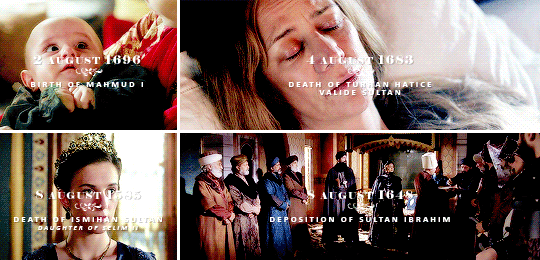


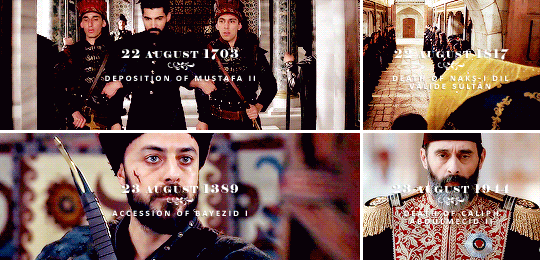




𝐢𝐧 𝐭𝐡𝐞 𝐦𝐨𝐧𝐭𝐡 𝐨𝐟 𝐚𝐮𝐠𝐮𝐬𝐭 𝐢𝐧 𝐨𝐭𝐭𝐨𝐦𝐚𝐧 𝐡𝐢𝐬𝐭𝐨𝐫𝐲 | insp by @winterhalters
#history#historyedit#ottoman history#ottomanladiesedit#*everymonth#turhan hatice sultan#ismihan sultan daughter of selim ii#ibrahim I#ayse sultan daughter of abdulhamid ii#esma sultan daughter of ahmed iii#cemile sultan daughter of abdulmecid i#mustafa ii#naksidil sultan#bayezid i#abdulmecid ii#emine sultan daughter of abdulaziz#aliye sultan daughter of murad v#behice sultan daughter of abdulmecid i#fatma sultan daughter of abdulmecid i#rukiye sabiha sultan daughter of mehmed vi#selim i#murad v
139 notes
·
View notes
Photo




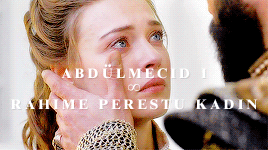
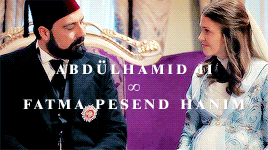




OTTOMANLADIES’ 2ND BIRTHDAY CELEBRATIONS
(some) marriages for love* in the ottoman dynasty – requested by anon
*one-sided or not
#history#historyedit#ottoman history#haseki hurrem sultan#suleyman i#selim ii#nurbanu sultan#murad iii#safiye sultan#abdulmecid i#bezmiara kadin#rahime perestu sultan#ayse sultan daughter of abdulhamid ii#abdulhamid ii#fatma pesend hanim#fehime sultan daughter of murad v#hatice sultan daughter of murad v#mediha sultan daughter of abdulmecid i#ottomanladiesedit#*requested
332 notes
·
View notes
Note
Hi, I love your content, it's very interesting. I have a question, was there an imperial princess who was married to someone outside the Ottoman Empire?
I hope you understand my question since English is not my first language.
Thank you :D
Of course, most of the time this happened at the beginning and at the end of the empire:
Nefise Melek Hatun, daughter of Murad I Hudavendigar, married Karamânoğlu Alâeddîn Alî Bey. As the name suggests, he was part of the Karamânoğlu family and the ruler of the Karamân Principality. Her sons became rulers of the principality as well, as Mehmed II and Alâeddîn Alî II
her sister Sultan also married a member of the Karamânoğlu family, Turgut Bey
another sister of hers, nameless for now, married Saruhânoğlu Hızır Bey
Oruz (or Uruz) Hatun, daughter of Bayezid I, married a grandson of Timur's, Ebû-Bekr Mîrzâ, and died in Samarkand.
İlaldi Sultan, daughter of Mehmed I, married another member of the Karaman family, Karamânoğlu İbrâhim II Bey, ruler of the Karaman principality, and son of Nefise Melek Hatun's son Mehmed II Bey.
two of her sisters, a nameless one and Ayşe Sultan, married two other members of the Karaman family, Isa Bey and Alaeddin Ali Bey, both sons of Mehmed II Bey and therefore brothers of their sister's husband.
Mihrimah Sultan, granddaughter of Mehmed V, married Prince Nayef bin Abdullah of Jordan
Hatice Hayriye Ayşe Dürrüşehvar Sultan, daughter of Caliph Abdülmecid II, married General Hidayet Ali Han Vala-şan Azam-cah Bahadur Nevvab Mir, Prince of Berar
Fatma Neslişah Sultan, granddaughter of Abdülmecid II and Mehmed VI, married Prince Mehmed Abdül-Mün'im of Egypt.
Her sister Zehra Hanzade married Prince Mehmed Ali İbrahim of Egypt
Their sister Necla Hibetullah married Prince Amr İbrahim of Egypt
#anon#ask post#ask: ottoman history#nefise hatun daughter of murad i#sultan hatun daughter of murad i#unnamed daughter of murad i#oruz hatun daughter of bayezid#ilaldi sultan daughter of mehmed i#unnamed daughter of mehmed i#ayse sultan daughter of mehmed i#mihrimah sultan granddaughter of mehmed v#durrusehvar sultan daughter of abdulmecid ii#fatma neslisah sultan daughter of sehzade omer faruk#hanzade sultan granddaughter of abdulmecid ii#necla hibetullah sultan daughter of abdulmecid ii#Anonymous
16 notes
·
View notes
Note
Princesses who were politically active?
Nefise Melek Hatun: daughter of Murad I, she married Karamânoğlu Alâeddîn Alî Bey and acted as mediator between her father and her husband during the Ottoman-Karaman conflict.
Selçuk Hatun: daughter of Mehmed I, she had a long life in which she acted as ambassador in the conflict between the future Bayezid II and his half-brother Cem
Mihrimah Sultan: daughter of Suleyman I and Hurrem Sultan, she was married to the Grand Vizier but exerted political influence in her own right as well. As a widow, she helped her brother Selim II both politically and economically (lending him money to pay the troops). She also managed the harem for him. Her daughter Ayşe Hümâ-Şâh was influential as well, being married to her father's successor.
Ismihan Sultan: daughter of Selim II, she was married to the Grand Vizier and as such was the most influential among her sisters. She also wrote to Catherine de Medici about some Turkish ladies who had been captured by Frenchmen at sea.
Hatice Sultan: daughter of Mehmed IV, she became her brother Ahmed III's advisor during his reign and she was one of the people who stayed with him until the end.
Fatma Sultan: daughter of Ahmed III, she was regarded as the true power in the Tulip Era. She was married to the Grand Vizier and even entertained foreign ambassadors who wanted to speak with him or with her father.
Esma Sultan the elder: daughter of Ahmed III, she became influential during the reigns of her brothers Mustafa III and Abdülhamid I to the point she was called a new Ismihan Sultan. She also was married to the Grand Vizier. Esma Sultan prevented a coup d’état against Abdülhamid I by warning him that Halil Hamid Paşa planned to depose him in favour of Şehzade Selim
Beyhan and Hatice Sultan: daughters of Mustafa III, they were behind the process of modernization in palace life and were very influential during their half-brother Selim III's reign.
Esma Sultan the younger: daughter of Abdülhamid I, she was Mahmud II's favourite sister even though they had different mothers. She was selected by dissidents as a possible replacement for Mahmud II on the throne.
Seniha Sultan and Fatma Sultan: daughters of Abdülmecid I, they were against Abdülhamid II's rule and tried to free Murad V from Çırağan Palace to put him back on the throne. In this they were helped by their brothers Ahmed Kemaleddin and Selim Süleyman.
Fehime Sultan: daughter of Murad V, she was a supporter of the constitution and composed a piano sonata titled "Pour La Constitution"
I hope I haven’t forgotten anyone. If I did, I’m sorry.
#anon#ask post#ask: ottoman history#nefise hatun daughter of murad i#selcuk hatun daughter of mehmed i#mihrimah sultan#ismihan sultan daughter of selim ii#hatice sultan daughter of mehmed iv#fatma sultan daughter of ahmed iii#esma sultan daughter of ahmed iii#beyhan sultan daughter of mustafa iii#hatice sultan daughter of mustafa iii#esma sultan daughter of abdulhamid i#seniha sultan daughter of abdulmecid i#fatma sultan daughter of abdulmecid i#fehime sultan daughter of murad v
60 notes
·
View notes